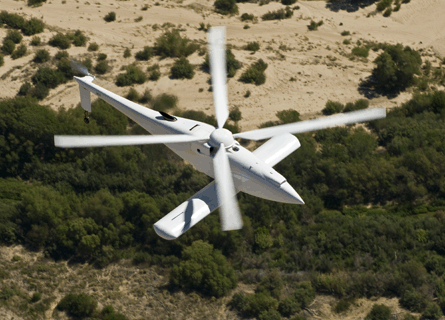The US Army will continue acquiring and fielding new types of unmanned air systems to meet immediate requirements, even as a long-term strategy takes shape to fill a void left by the cancellation of its Future Combat Systems programme.
Later this year, Boeing A160 Hummingbirds will be deployed to Afghanistan with the Northrop Grumman vehicle and dismount exploitation radar (VADER). The A160 replaces the Northrop MQ-8B Fire Scout as the army's preferred vertical take-off and landing UAS.
"There is a desire in the army from some as to whether we should establish a programme of record [for the A160], but thus far there is no requirement for it," says Col Gregory Gonzalez, programme manager for army UAS.
 |
|---|
© Boeing |
Meanwhile, Boeing expects to receive invitations to offer the A160 on contracts to serve as a cargo resupply aircraft for both the US Marine Corps and Special Operations Command, says Ernie Wattam, its A160 programme manager. The company restarted production of the type in March in anticipation of new contracts.
"The fact that Boeing's moving forward [on production] makes this more palatable from a timeline perspective," says Tim Owings, the army's deputy programme manager for UAS.
Meanwhile, 40 upgraded Honeywell gMAV micro air vehicles will be spread around the combat theatre to fill niche assignments. The army has not yet decided whether the A160 or gMAV will remain in the permanent inventory after the short-term need passes, Gonzalez says.
Meanwhile, the army is trying to reach key decisions involving the three lines of UAS types that are programmes of record, but facing possible setbacks. Its requirements and capabilities integration centre has not signed off on a request to launch the AAI RQ-7C Shadow, which boosts an extended-range version of the RQ-7B that also includes adding a heavy-fuel engine.
"We don't know for certain if we'll be given authorisation to then request funding for Shadow 7C or not," Gonzalez says.
The service has, however, approved a set of upgrades for the RQ-7B, including a laser designator, electronic fuel injection and a wider wingspan to boost endurance from 5h to 8h. "That will get us to a point that's very, very close to what the Shadow 7C requirements are," Gonzalez says.
For the long-term, the army also wants to insert a new layer of UAS to meet battalion-level requirements. In the interim, a requirement for a small UAS sized between an AeroVironment RQ-11 Raven and a Shadow will be met by acquiring the AeroVironment Puma all environment mini-UAS. But the army is also looking at aircraft above 35kg (77lb).
Source: Flight International



















